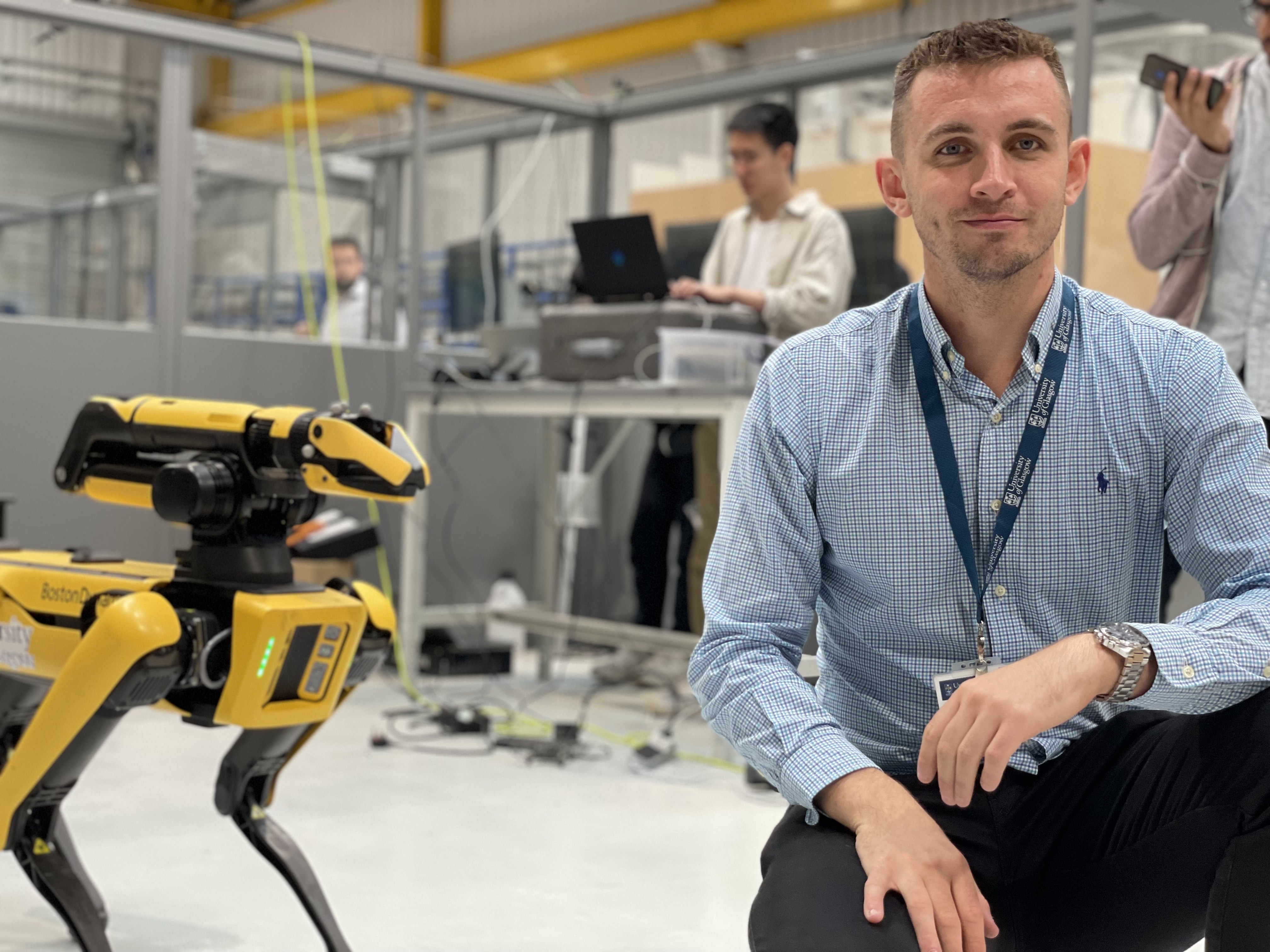Daniel Mitchell
Email: D.Mitchell.5@research.gla.ac.uk
LinkedIn: https://www.linkedin.com/in/daniel-mitchell1/
TikTok: @Robot_Myths
Summary Video : Symbiotic Multi-Robot Fleets
![]() https://orcid.org/0000-0002-9390-4150
https://orcid.org/0000-0002-9390-4150
Research title: Symbiotic Multi-Robot Fleets for Scalable Resilient Cyber Physical Systems
Research Summary
Several challenges currently exist within Inspection, Maintenance and Repair (IMR) of complex offshore infrastructures where this research topic focusses on safety and optimization of robotic solutions. Safety should always take priority in any engineering solution. Opportunities exist in robotic solutions which can be utilized to remove humans from dangerous areas which are typically involved during IMR of large offshore assets. There are also additional challenges which exist in robots as independent platforms are not designed to coexist in a Multi-Robot (MR) fleet for autonomous operations. For example, an autonomous mission where a UAV collaborates alongside a quadruped robot within an inspection mission. Therefore, opportunities exist in creating a methodology/technology which allows for a MR fleet to Cooperate, Collaborate and Corroborate (C3) information from all types of autonomous missions and across a range of device/robots.
This research identifies MR fleets as key elements within the optimization of sector-wide autonomy as a service where a diverse range of robots can leverage the capability of autonomous missions. This is achieved via a Symbiotic System of Systems Approach (SSOSA) where key research elements include resilience, reliability and safety of robotic platforms.
Why a Symbiotic System of Systems Approach (SSOSA)? - Symbiotic systems allow us to understand and positively contribute to the health of the asset systems and robots. This builds on safety, resilience and reliability in Beyond Visual Line of Sight (BVLOS) situations, where human deployment is problematic and hazardous. A system of systems approach allows for independent systems to become part of a unique capability which is created as part of a larger system via mutualistic gain across systems.
The cyber physical systems approach allows for the orchestration of a MR fleet and environmental sensors to allow for the human-in-the-loop to have an increased operational overview. The Symbiotic Digital Architecture also allows for autonomous decision making (symbiotic interactions) to take place across the MR fleet. This could be to rectify unforeseen challenges which are found within an autonomous mission due to resilience and/or reliability allowing for robots to interact with each other via data sharing and physical interactions such as supplying tools or optimisation of a mission via another type of robot.


